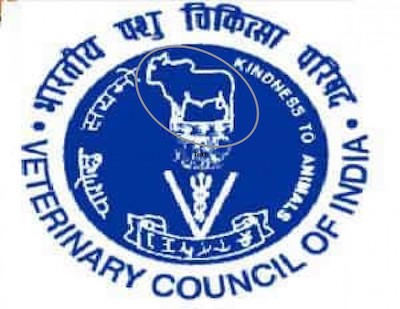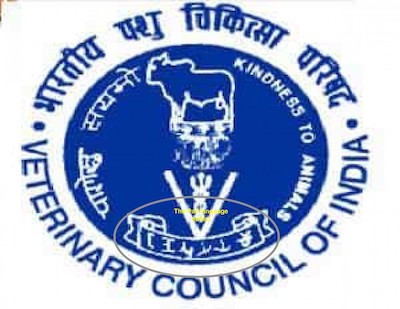
The Story behind VCI emblem
Pashu Sandesh, 22nd July 2020
Veterinary Council of India (VCI) came into existence in 1984 and while being a part of the council very few people know the story behind the making of the emblem they proudly carry as a mark of their apex body and profession. In this edition of our series of stories in the run-up to the VCI elections, we bring out some interesting fact behind the making of the emblem of the VCI.
When the Veterinary Council was formed in 1984, then there was a need for the emblem which would aptly represent the Council and the Veterinary profession as a whole. Dr CM Singh the founder President of VCI entrusted this task to the first secretary Dr Ram Kumar. Some idea was provided by Dr CM Singh as the inspiration came from the fact that the World’s first Veterinary Hospital was established by Samrat Ashoka, the great Mauryan emperor following his change of heart and the embrace of Buddhism which has the core philosophy of compassion and love for all Living beings as its foundation. It was this compassion and empathy adopted by Ashoka which probably laid the foundation for the "One Health" concept believing in Healthy Animal Healthy Human idea which is even more relevant in the time of corona crises.
Dr Ram Kumar searched the archives with great pain and visited the National Museum for the suitable prop for the emblem. He chose the image of the Bull which was found on a pillar from Ashoka’s period and excavated from the Rampur in Bihar. The Pillar which was earlier part of the Calcutta museum can now be seen at the Rashtrapati Bhawan in New Delhi. As per the Archaeologists, the bull was not only the symbol of prosperity but also depicted vigour (virile form) & fertility.

Having found the symbol the next task was to decide upon the sacred sentence to be written on the logo which would depict the Council in one sentence. To go with the symbol a Pali Script from IX Rock Edict from Ashoka period was chosen which read on the fourth line 'Panesu Saymo’. Ashoka's adoption of Buddhism gave a new meaning to animal care. Animals, till then were considered a mere object of benefit, utility or status. Ashokan tenets started describing animals as co-existent of the planet. A part of his dictum was 'Panesu Saymo' the nears Sanskrit version of which should be 'Sarveshu Praneshu Samyamah’ meaning “Kindness to Animals”. The Pali script is adopted as such in the emblem which is highlighted in the following picture.

The 'V' in the emblem stands for 'Veterinary Science' which encompasses animal health and husbandry. The snake and the pole represent the treatment of disease and protection from suffering. The pole and serpent, therefore, has become a symbol of cure from evil, disease and death.
(Courtesy: Dr V Ram Kumar, Founder Secretary VCI)











































































